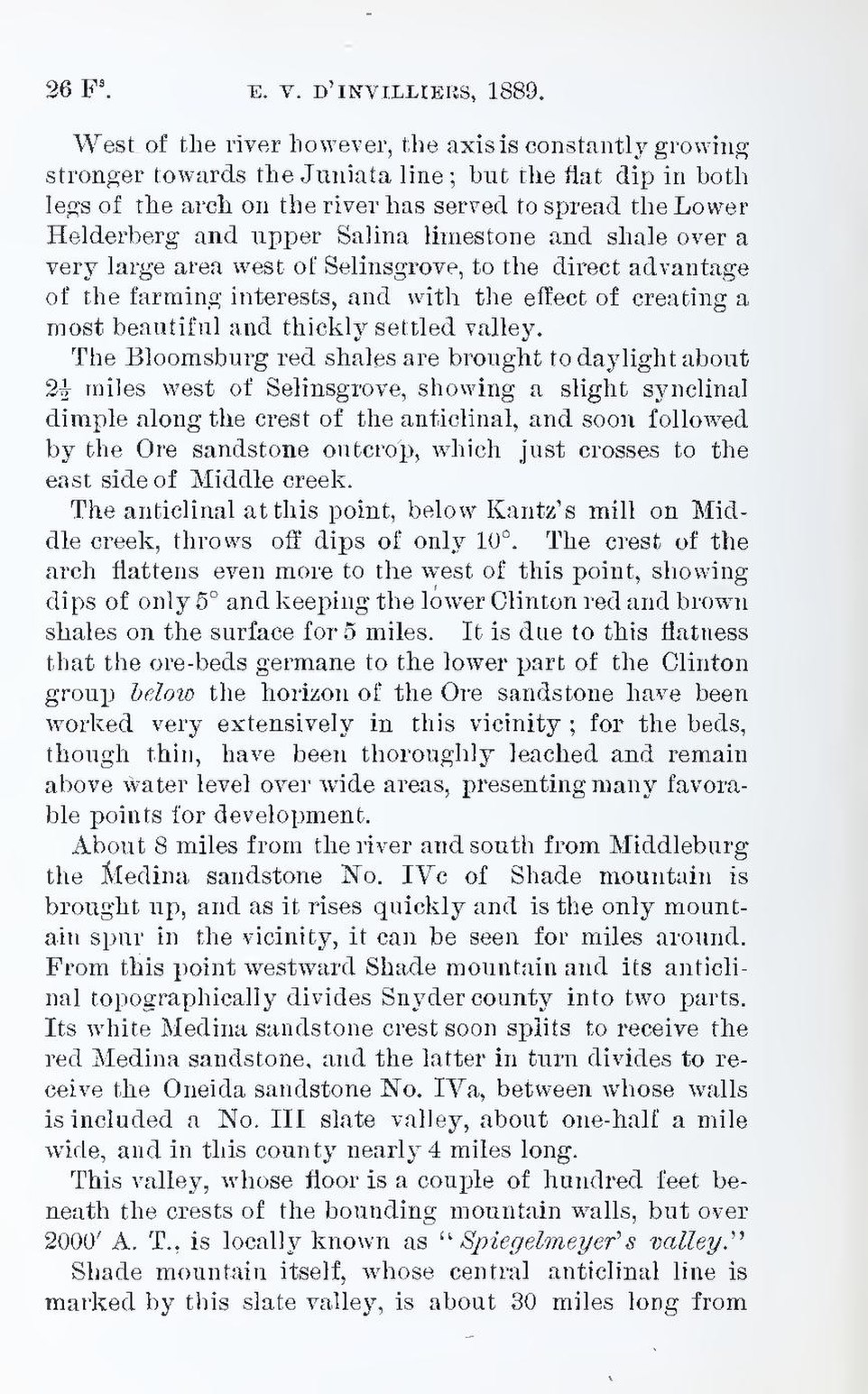West of the river however, the axis is constantly growing stronger towards the Juniata line; but the flat dip in both legs of the arch on the river has served to spread the Lower Helderberg and upper Salina limestone and shale over a very large area west of Selinsgrove, to the direct advantage of the farming interests, and with the effect of creating a most beautiful and thickly settled valley.
The Bloomsburg red shales are brought to daylight about 2½ miles west of Selinsgrove, showing a slight synclinal dimple along the crest of the anticlinal, and soon followed by the Ore sandstone outcrop, which just crosses to the east side of Middle creek.
The anticlinal at this point, below Kantz’s mill on Middle creek, throws off dips of only 10°. The crest of the arch flattens even more to the west of this point, showing dips of only 5° and keeping the lower Clinton red and brown shales on the surface for 5 miles. It is due to this flatness that the ore-beds germane to the lower part of the Clinton group below the horizon of the Ore sandstone have been worked very extensively in this vicinity; for the beds, though thin, have been thoroughly leached and remain above water level over wide areas, presenting many favorable points for development.
About 8 miles from the river and south from Middleburg the Medina sandstone No. IVe of Shade mountain is brought up, and as it rises quickly and is the only mountain spur in the vicinity, it can be seen for miles around. From this point westward Shade mountain and its anticlinal topographically divides Snyder county into two parts. Its white Medina sandstone crest soon splits to receive the red Medina sandstone, and the latter in turn divides to receive the Oneida sandstone No. IVa, between whose walls is included a No. III slate valley, about one-half a mile wide, and in this county nearly 4 miles long.
This valley, whose floor is a couple of hundred feet beneath the crests of the bounding mountain walls, but over 2000′ A. T., is locally known as “Spiegelmeyer’s valley.”
Shade mountain itself, whose central anticlinal line is marked by this slate valley, is about 30 miles long from
